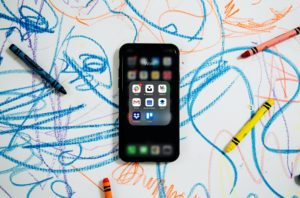In recent years we have moved to a media-rich world where there has been a growing interest in the use of multimedia throughout education. Today, we live in a world in which digital technology is part of our everyday lives. Technology is a powerful tool that offers extensive opportunities for meeting the needs of learners and helping student improve the

Even the use of simplistic multimedia tech such as sound, images, and video clips can be implemented into lectures and presentations.
It is important to provide interactive and engaging multimedia into your assignments as a student or your classroom as a teacher. The use of audio and video make it possible to present knowledge in diverse and unique ways and enables a different form of interaction. By utilizing audio and video, you can improve learning resources to better explain concepts, inspire learning, and create an exciting learning space.
Audio and visual aids are beneficial because they can be reused over and over (until they go out of date that is… or the link stops working). Essentially, these learning and teaching materials can be applied as often as needed.
One major point is that when you are using audio and visual aids for educational purposes, you should always make sure to be conscious of the copyright rules (which I now am thanks to this class) and give credit where it is due.
A potential problem with this, however, is that if you are using video in your class you should ensure it has subtitles to be inclusive of everyone in the classroom.
This video is from 2017, yet it is still relevant. In an ever-evolving world, I believe that instructional technologies should be incorporated into the classroom because when they are used appropriately, they can have a positive impact on student achievement and learning.
During my school visits to Claremont Secondary, it has been interesting to see the ways in which the teachers integrated technology into the classroom. It was unlike my classroom experience where your cellphones, if you even had one, were expected to be out of sight and out of mind. Not a laptop in sight. Yet, at Claremont students were being advised to use something called a “Chromebook”; in fact, the school had actually purchased hundreds of them for the students. Yet, I saw cellphones as an active part of the classroom. Teachers asked students to look things up on their phone, take pictures of assignments, even get in contact with students that were absent that day.
Some educators believe that technology in the classrooms would cause more harm than good, interrupting classroom management. I witnessed one classroom with a “cellphone daycare” where cellphones were put at the beginning of class and then picked up again at the end of class.

This brings me back to the point that as long as they are implemented in an appropriate and productive way, instructional technologies could have a positive impact on students’ learning and achievement.
Mayer describes three assumptions within Multimedia Learning:
- Dual channels: there are separate channels for processing visual and auditory experiences and information in memory
- Limited capacity: humans are limited in their ability to process t information and experience
- Active processing: processing information in channels is an active, not passive, process
I believe that Mayer’s theory and its principles is a great resource for educators, and significantly contributes to forming theories and principles about integrating multimedia in the learning environment.

